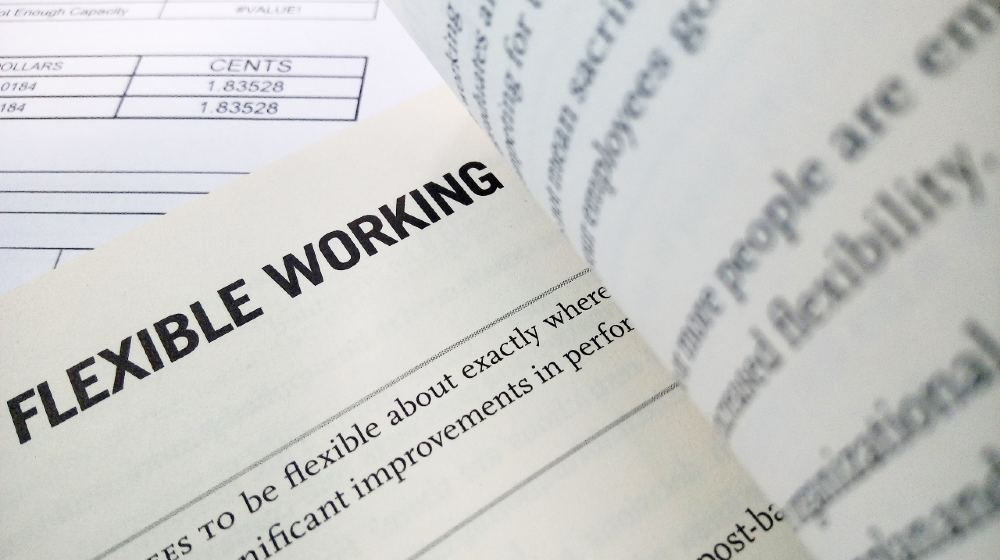Business
Employers, It’s Time To Embrace Flexibility

Another New Normal. The economy emerges from the pandemic, businesses find themselves in tight competition for talent that wants one aspect of COVID-19's impact on the workplace to continue: flexibility.
RELATED: Burned Out Millennials Quitting Their Jobs
Employers, It's Time To Embrace Flexibility Tammie Hayden Column
Employers that embrace it will win.
Flexibility's importance already was on the rise before the pandemic. Today there's real-world proof that remote work and flexible work schedules, in most cases, do not negatively impact productivity, and employees have developed a taste for flexibility's independence.
According to a study by Morneau Shepell, a human resources services provider, nearly two-thirds of employees want the flexibility to work from home in a post-pandemic world. In fact, LinkedIn's March 2021 Workforce Confidence Study reports that workplace freedom and more personal control trump compensation.
It makes sense. The ability to work from home as needed, to take time for personal obligations, and to manage the time your way, not the boss', is an enormous quality-of-life boost for employees.
The impact is even more significant for employers positioning for the economy's growth.
By writing flexibility into job descriptions and infusing organizational culture with it, employers attract top talent by letting candidates know that they value what they value.
They create a deeper, more diverse talent pool by generating more interest from more candidates, too. Flexibility opens opportunities to working mothers, caretakers, people with disabilities, transportation challenges, education pursuits, and more.
Flexibility reduces flight risk to retain top talent by ensuring the grass is greenest on this side and it increases job satisfaction by delivering on the promise of work-life balance and reducing stress.
It drives employees' happiness and fulfillment, which strengthens loyalty, increases productivity, and advances team culture. There are operational benefits, too. Less turnover means fewer gaps in key roles, lower recruiting costs, and decreases in absenteeism and tardiness.
Flexibility also can boost brand awareness and help companies stand apart from competitors – or at least side by side with them. Flexibility sends a powerful message to candidates and employees that the company cares.
It cares about their time, their work-life balance, their health, and their well-being. It cares about them as a person. Employees feel appreciated and they feel valued. This message resonates more today than ever before.
Flexibility isn't one size fits all. It shouldn't be. Flexible work can mean many things to employers as well as employees. Even the U.S. Department of Labor creates an open door with its definition of “flexible work schedule” as anything alternative to the traditional 9-to-5, 40-hour workweek.
Employers have the power to choose what workplace flexibility means for their organization, what will work best in their unique environments, and what will best resonate with their teams to deliver the most value and impact.
This might include full-time remote work or a hybrid approach that blends remote and on-site work. Another approach might compress a 40-hour workweek into fewer than five days, or allow employees to set their own start and end times.
Making an effort to minimize travel in favor of virtual connections can add flexibility to employee calendars, too.
What works best is different by a company and by industry. The goal is to find what adds the most value both for employees and employers. When looking at how to attract and retain a more robust, diverse talent pool with workplace flexibility, it is possible to balance the needs of employees and the needs of the business – it doesn't have to be one or the other.
To make workplace flexibility a sustained reality, employers should assess how and where flexibility already works in the organization and how to maintain or expand it.
Surveying employees can help understand what they want and what is most meaningful. Researching the industry – and specifically job candidates' fields – also can identify where and what changes might sharpen the competitive edge.
Employers might need to experiment to see what works best for their organizations. The key is getting started. Workplace flexibility isn't a new strategy to attract and retain a more robust, diverse talent pool; it is the new gold standard – and is fast becoming yet another new normal.
You Might Also Like:
- Bitcoin Miners Booted By China, Texas Likely Destination
- Judge OKs Resumption Of Oil And Gas Leasing
- What Are the Reasons for Business Failures?
Keep up to date with the latest finance news by following us on Facebook and Instagram.
Article Source: NewsEdge



